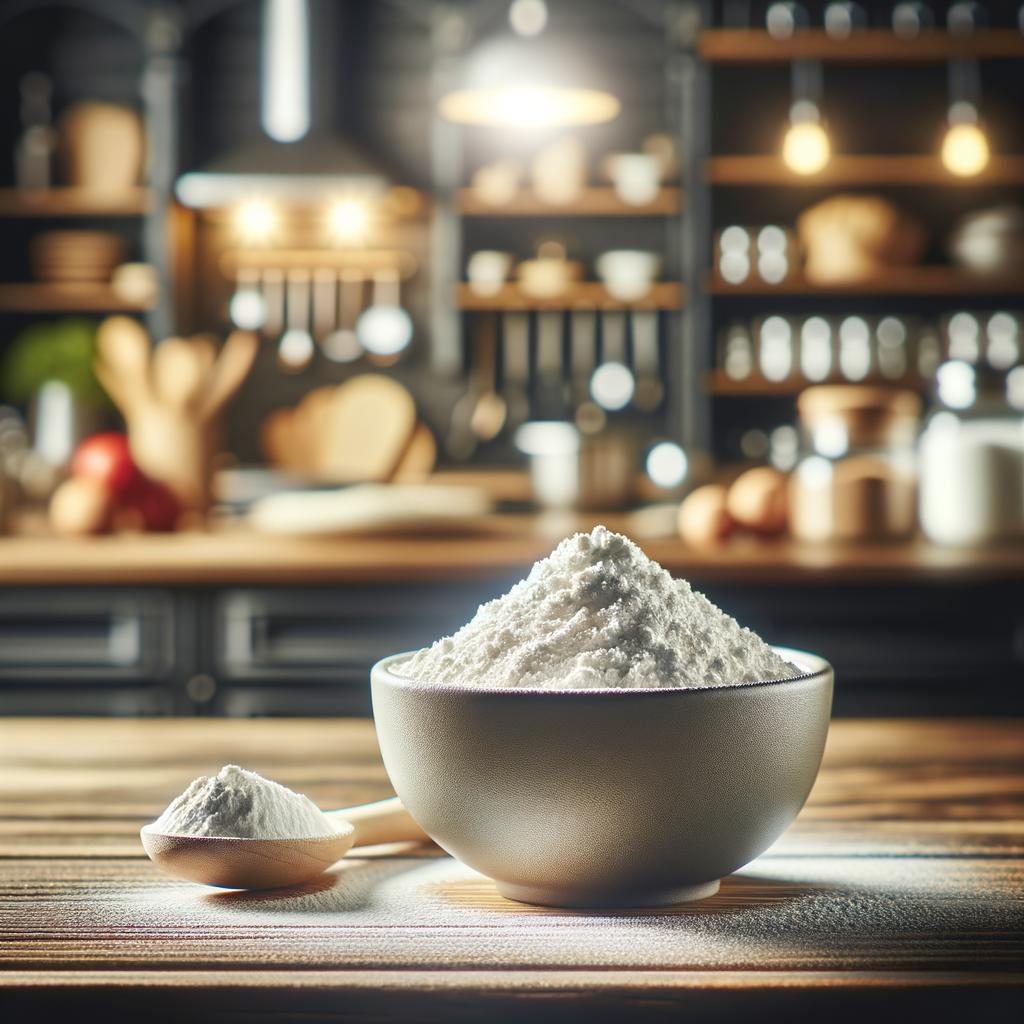Baking Powder

Description
Baking powder, a seemingly humble ingredient, is in fact a magical dust that brings life to our favorite baked goods. Its appearance is as unassuming as it gets - an off-white, fine powder that could easily be mistaken for flour or powdered sugar. However, its role in the culinary world is much more significant. The texture of baking powder is similar to that of cornstarch, with a smooth, silky feel. Its flavor is neutral, almost chalky, and is typically undetectable in the final product of a recipe. What sets baking powder apart from similar ingredients is its leavening properties. It contains both a base and an acid, and when it comes into contact with liquid and heat, it creates a chemical reaction that produces carbon dioxide gas, causing dough or batter to rise.
Primary Uses
Baking powder is a key ingredient in a wide variety of cuisines and dishes. From fluffy pancakes to light and airy biscuits, to towering layer cakes, its leavening power is what gives these baked goods their lift and soft texture. It's also used in certain fried foods to create a light, crispy coating. Apart from its culinary uses, baking powder has found its place in household cleaning due to its deodorizing and gentle abrasive properties.
History
The history of baking powder is as fascinating as it is practical. Before its invention in the mid-19th century, cooks relied on yeast or eggs to leaven their baked goods, a process that was time-consuming and inconsistent. The invention of baking powder revolutionized baking, making it more accessible and reliable for home cooks. Its popularity has only grown over time, and it is now a staple in kitchens worldwide. There's an intriguing story that the phrase "the greatest thing since sliced bread" could easily have been "the greatest thing since baking powder", such is its impact on the culinary world.
Nutritional Information
While baking powder is not consumed for its nutritional value, it's worth noting that it is low in calories and fat-free. However, it is high in sodium, so those on a low-sodium diet should be mindful of their baking powder consumption. Compared to its leavening counterpart, baking soda, baking powder contains less sodium per serving, making it a slightly healthier choice for those watching their sodium intake. Its true value lies not in its nutrition, but in its ability to transform simple ingredients into culinary delights, making our food experiences richer and more enjoyable.

